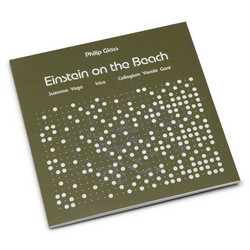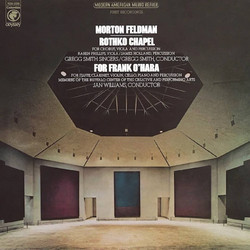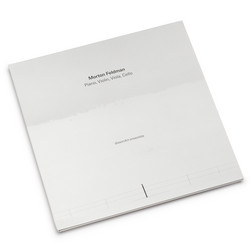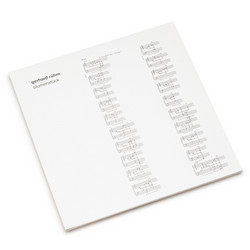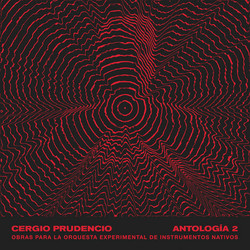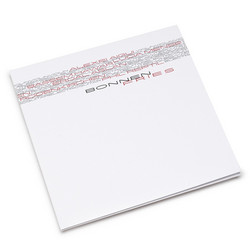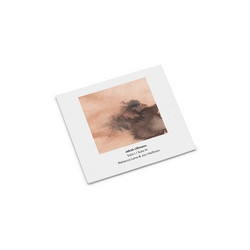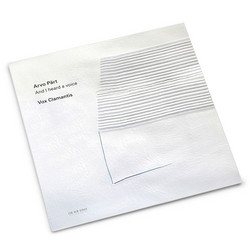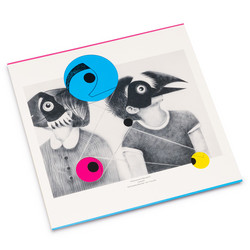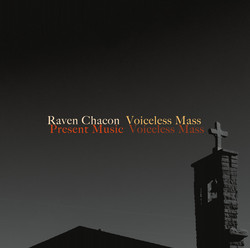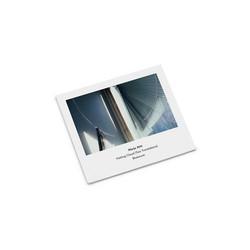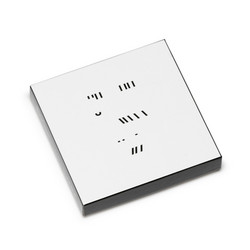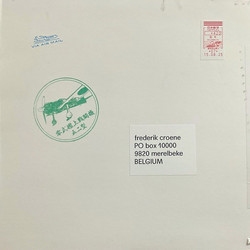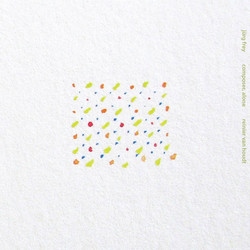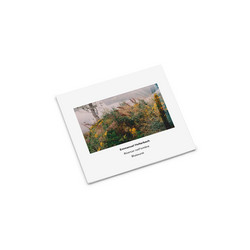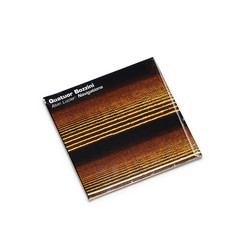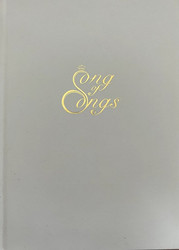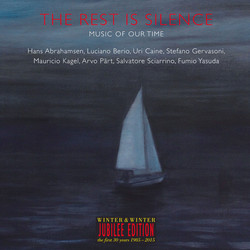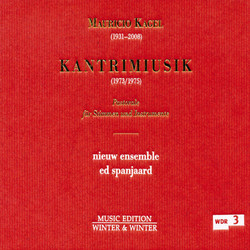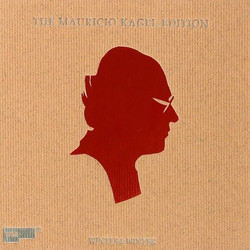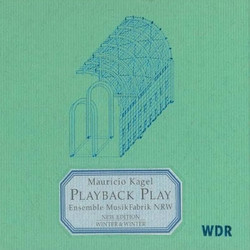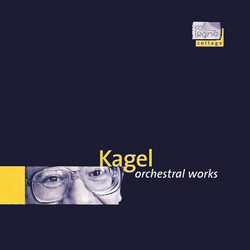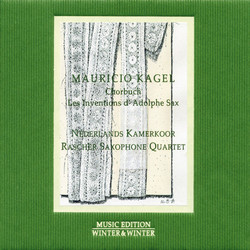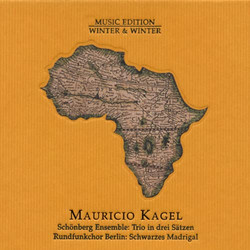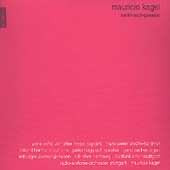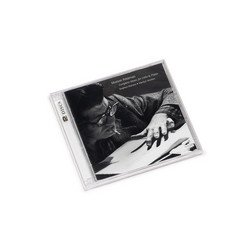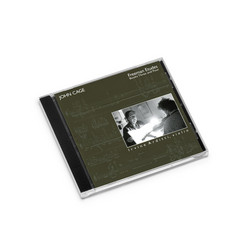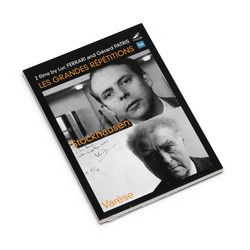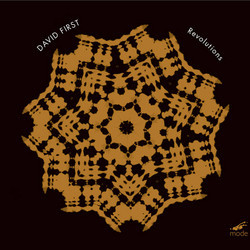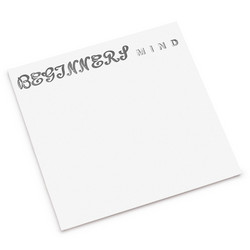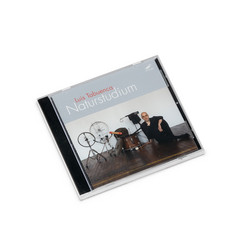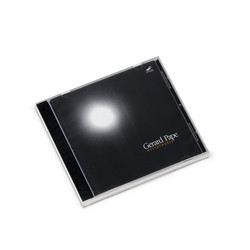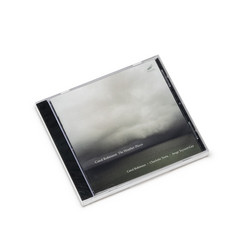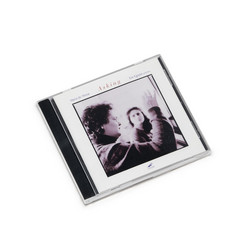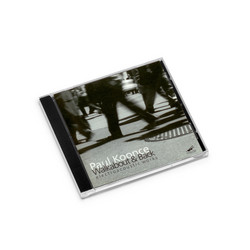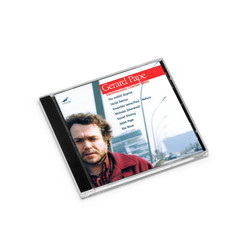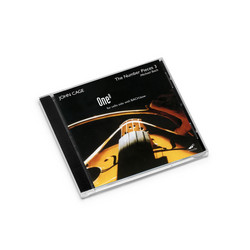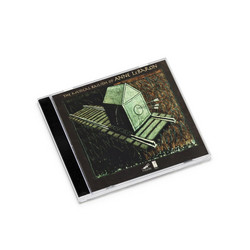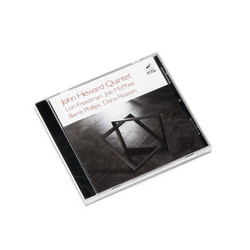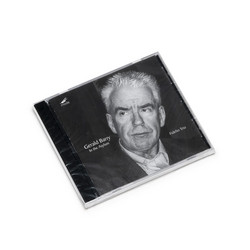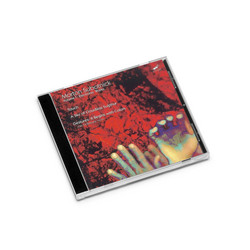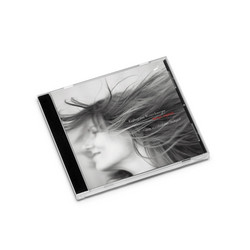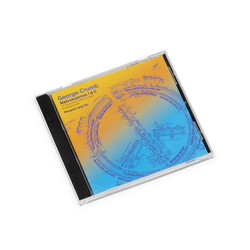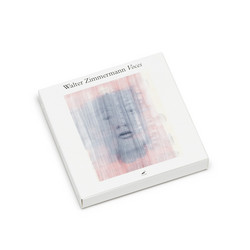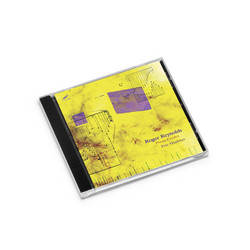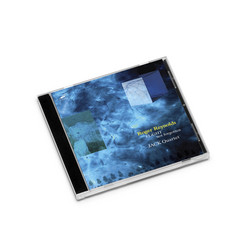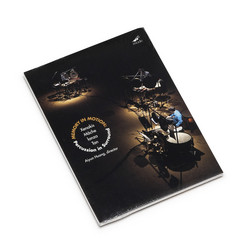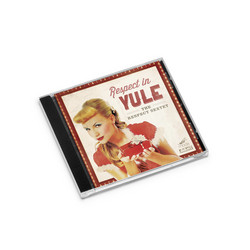This disc collects two early, forward looking works by Argentine born Mauricio Kagel, now living in Germany. Both works are constructed in such a way so that no two performances can ever be alike.
Transición II was an early exploration of what "live electronics" are now being used to achieve. The score is in individual pages which can be placed in any order by the performers. It works on three levels. LIVE: The pianist performs on the keyboard while a percussionist performs inside the piano. TAPE #1: Before performing the piece, they prerecord some sections which are to be played back during the performance. TAPE #2: the live performance is also recorded and that soundtrack can be played back. Repetition of any of the musical material is not allowed - instead, as the players continue to perform in the present, the tapes can recall music already played. In addition, the tapes can be manipulated to change timbre and frequencies in order to make recognition of the original sounds impossible.
For this recording, the modern technology of live electronics is used in place of the analogue tape loops. This allows the electronic technician to become an actual third performer - creator of the "tapes" and in charge of the sound direction.
"Phonophonie is intended to be the portrait of an anonymous 19th century singing actor, captured at the moment of his vocal decline...", to quote Kagel. Every element is rigorously organized in the score of Phonophonie, especially elements which are not strictly musical (acting, gestures, lighting, etc.).
It is actually a piece of musical theater-the singer, preferably a dark male voice, should be alone on stage. He plays an unconventional traditional instrument (the Waldteufel, string with rosin connected to a simple resonator) which produces a monotone gurgling sound similar to the noise produced when one expires. A second voice must be placed off-stage (the part is performed by another singer or a reciter). Another tape contains a mix of "other sound sources", extraneous sounds and voices.
Conceived as a melodrama, the singer reacts with the other sounds as well as having to rapidly switch between four roles: the singer, the mimic, the ventriloquist and, in addition, the deaf-mute. The dramatic function of this dissociation is redefined over the course of a lengthy series of schizophrenic dialogues and "trialogues" between the persona of the singer and his disconnected parts.
